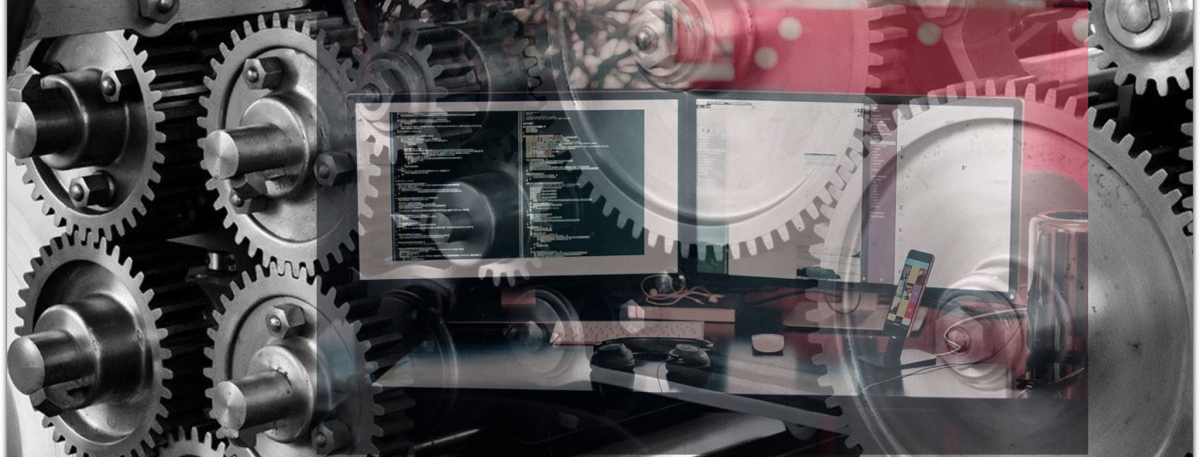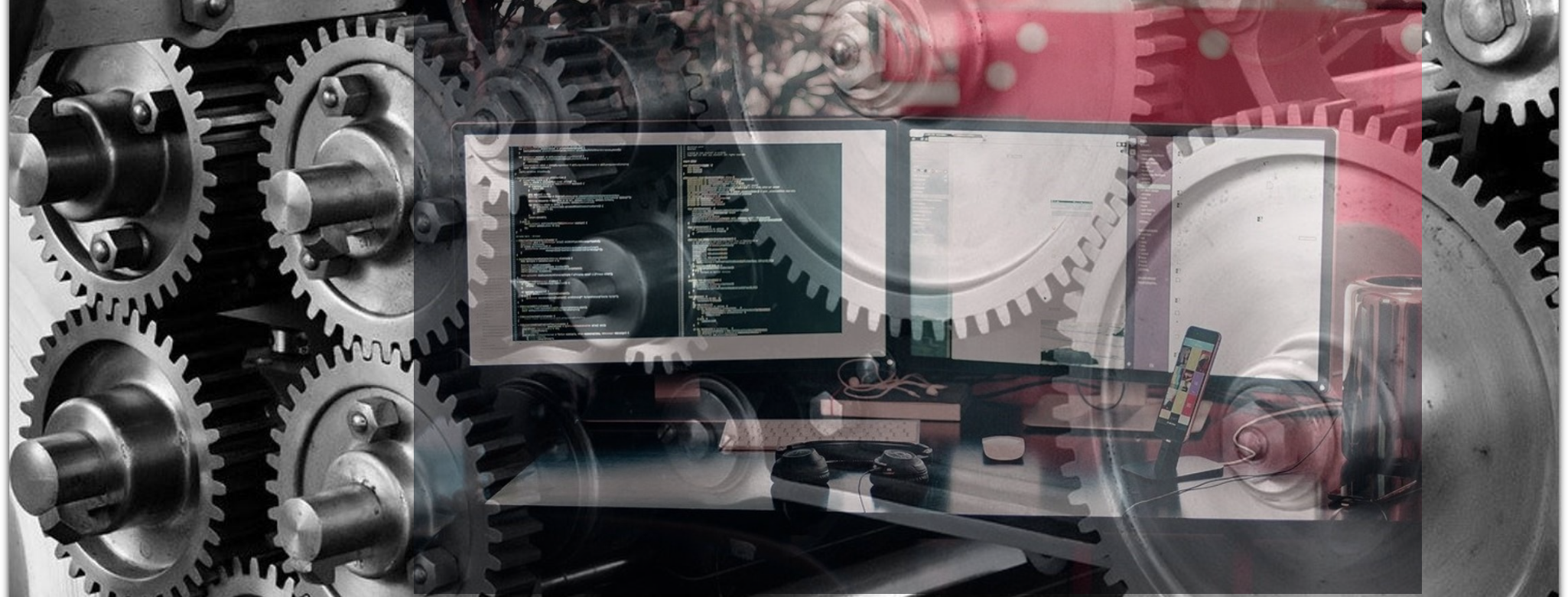The Role of Information Technology in Plant Engineering and Maintenance
Plant Engineering and Maintenance are functions, which form an integral part of any manufacturing industry.
Maintenance Management or more appropriately Fixed Asset management is an ideal candidate for computerization.
The Basic Functions of Plant Engineering and Maintenance
These could vary marginally from Industry to Industry, overall the following functions are normally associated with any Maintenance department,
Maintaining the latest list of equipment or more specifically, the Technical Database of the entire plant
Attending Machine Breakdowns and maintaining its History
Machine wise Periodic Preventive Maintenance activities and schedules
Managing the Repairs of Critical Assemblies, Sub-Assemblies, and Spares
Reconditioning or Refurbishing of equipment
Managing the Engineering Stores
Managing Instrument and Gauge Calibration activities
Condition monitoring which, over a period can lead to Predictive Maintenance
Monitoring and managing the Utility Equipment, such as, Generator Sets, Boilers, Compressors, daily electrical consumption, maintaining the Energy Bills, etc.
Department Administrative Activities such as Work Orders raised to outside Contractors, their work status, Cash
Expenses, Traveling and Conveyance, Monitoring material sent out for Repairs, etc.
Preparing and Monitoring the Engineering Budget
Planning and Monitoring of Resources such as Manpower and Spares
Classification of Activities
These activities can broadly be classified under Planned, Unplanned, and Routine Jobs. Moreover, from the point of view of the maintenance department these activities mainly cover Recording, Documentation, Planning, and Control. But the most simple and practical way of classifying these is – jobs that affect production and jobs that don’t affect production, as the prime goal of any maintenance department would be to see that production is not affected due to them!
Moreover, these are areas where Information Technology (IT) can play a key role in optimizing the workflow efficiently.
Management Requirements
Fixed Asset Management
Today, maintenance management is considered as a subset of fixed asset management. The objective of fixed asset management is primarily,
To maximize the contribution of fixed assets to the profit of a firm, over the lifetime of the fixed assets
Maintaining a healthy state of the plant equipment over long periods
To minimize the loss of production time occurring due to Maintenance
And last but not the least providing a tight control over the utilization of Resources on these Assets
Maintenance Management and Measuring Maintenance Effectiveness
Varieties of measures are available to quantify maintenance effectiveness. It is tough to generalize on the best index for a particular industry. For instance, the financial impact of loss of production is usually very large for continuous- process industries, and usually much lower for specialty manufacturing businesses.
Some of the commonly used Indices for measuring Maintenance effectiveness are,
Percentage Breakdown based on availability of the equipment for production
The number of Downtime hours
Frequency of Breakdowns
Mean time between failures
Focus on Success
Information Technology can focus attention on the maintenance work planning aspect when designing a maintenance system. Secondly, it can provide means to strike at the root of the problems so as to eliminate recurring Breakdowns. Last but not the least involving all the personnel to see that the system is successfully implemented.
Here one will understand that a 100% solution is necessary, since anything short of that will just not work successfully. This can be the key to a successful system.
Maintenance Requirements
Machine History
By Machine history one normally means:
Technical Specifications, Installation history, any commercial details, and further Breakup of the equipment into further Assemblies, Sub-Assemblies, and Components
Classification of the machines into various Categories or Groups based on their application and further sub grouping them based on their technology etc, as required
Job History, for Breakdown, Preventive Maintenance and other maintenance jobs
Machine History related to Problems or Faults occurring and overall machine behaviour along with that of its Subsystems and last maintainable Components
Monitoring and Analyzing the performance of Critical Assemblies and Spares, and
Scheduling of planned activities such as Preventive maintenance and others
Effective Documentation
Having a practicable maintenance documentation system is vitally important to the smooth running of the maintenance system. This could be a combination of a manual method and a very effective computerized recording system that is practical and down to earth.
Problem definitions and definite steps to eliminate them:
Certain steps could be laid out to systematically identify and then eliminate problems-
First and foremost identifying problems that are being faced throughout the plant, here you can use Pareto or the Rating method
Infotech can help in codifying these problems or Faults, which might either be general i.e. common in nature or specific to the type of equipment
Identifying the Causes and their Root causes so as to effectively generate a Cause-effect diagram, the effect here being the Fault that has occurred
Failure Analysis, Here again Infotech can help in providing analysis from various angles, such as Machine Group, Make wise or location wise, thus providing a definite direction to the problem solving
Once you have analytical information on the problems you can set specific goals and undertake plans to reach these targets through periodic brainstorming
And in the end implement what has been decided through the above methods, either through Condition Monitoring and by taking regular preventive action
And finally the used of advanced techniques using Analytics to measure and predict the behaviour in order to take the most appropriate Preventive action
Maintenance Documentation
Cutting the Paperwork
Maintenance applications cannot do away with paper, but they can definitely cut it down. The importance of documentation cannot be undermined. This is an important area when we talk of standardizing procedures and documents and recording instances affecting the functioning of the department.
Equipment Documentation
This consists of a detailed list of each piece of machinery, equipment, etc, in the organization. In addition, must contain information relating to equipment inventory, core maintenance data, maintenance scheduling, inspection scheduling, and short-term work planning.
The core maintenance data consists of all information that is necessary for maintaining the equipment. It may consist of the core technical specifications for the equipment. The spares required for the equipment and from where they can be obtained, a list of the preventive maintenance jobs required by the equipment and a history of all maintenance jobs that are carried out on that piece of equipment.
Another area is related to the Assemblies and Sub-Assemblies on the machines that are recyclable and re-usable after repairs. Maintaining information on such equipment is also an important part of the documentation process.
Documentation of Planned Activities
These are related to the Preventive Maintenance and Instrument Calibration activities. Any maintenance life plan will specify the minor and major preventive maintenance required, and corrective maintenance guidelines for a unit. At the ground level, the plan consists of specifying the maintenance actions required, such as adjustment, calibration, test, repair, and replacement of components, and the timing of these actions.
Documentation and Computerization
Infotech can make a dramatic impact in this area, and the quality of maintenance workload planning can improve substantially. An ideal maintenance documentation system links all information together and automatically generates most of the resource requirements.
Planning and Scheduling of Maintenance Jobs
The role of the maintenance work planning system is central. This system must help in scheduling maintenance activities, scheduling/arranging resources and monitoring/controlling the maintenance work.
Timing
The timing of maintenance actions is extremely important. In general, there are two basic kinds of maintenance, one being fixed-time maintenance and the other condition-based maintenance.
Fixed Time Maintenance consists of actions carried out after regular intervals. These intervals might be expressed in calendar weeks or in terms of production cycles, hours of operation, etc. the most common and widely used being calendar weeks since it is the most practical and Infotech can make it more practical and simple in terms of planning, scheduling and implementation.
Condition-based Maintenance involves monitoring equipment, visually, or using other testing techniques and scheduling maintenance depending on the condition of the equipment.
The work generated through this can be best visualized as "week end" maintenance. These jobs are left until the weekly holiday or a gap in plant operation. These jobs might require that the plant be off-line when they are carried out.
These jobs are hard to define for continuous plants that never stop. In this case, these are defined as jobs that have a scheduling lead-time of more than a day.
Scheduling the Maintenance activities
Maintenance scheduling information essentially relates to the preventive maintenance schedule to be followed by a particular piece of equipment. It is derived using both the individual maintenance requirements for each equipment and the overall production and regulatory environment.
Note the difference between timing of the maintenance activities and their scheduling. The maintenance plan may say that a certain component needs to be changed in a machine after every thousand hours of use. This is the timing. Whereas Scheduling calls for specifying the date when the components will be replaced, along with specifying a host of things such as when the machine will be brought offline, when it will be restarted, and so on.
Again working out a combined practical solution is the key to regular usage and success.
Plant Shutdown!
Certain maintenance activities might be scheduled for the annual shutdown while others might be scheduled for weekends. The former work might consist of deferred major corrective work, major preventive work, and plant modifications that are capital in nature. These may also include planned shutdowns of the plant for statutory inspection purposes.
A problem in this area is conflicting resource requests, which have to be rescheduled. Clearly, there is a lot of scope for using Infotech in this entire cycle. Increase the use of Infotech in the maintenance functions in a planned way, and you can get solid benefits, both in terms of Problem control and more effectively in Cost Control.
Maintenance Resource Management
Work force
Having looked at the workload let us now turn our attention to maintenance resources required. The biggest resource is work force. The work force required might fall into several types, based on trades and skills. Such work force resources might be owned at the unit level or might belong to a central maintenance service. In addition one might need to take recourse to contract Labor for specialist or infrequent jobs.
Spare Parts
The next maintenance resource is spare parts. Maintenance spare part inventory management differs from raw material inventory management. Maintenance spare parts might be difficult to obtain or have long lead times. The important aspects here are being codification of the spares that are used or will be used in the plant.
From Maintenance angle there are two types of spares, one, which is a consumable and the other that is Recyclable. The Recyclable spare is usually a spare that can be repaired and re-used.
Infotech and Resource Control
This is closely linked to effective planning and scheduling of jobs. In addition, most importantly, this will cover effective work force utilization and plant wise or machine wise spares consumption. Once this information is regularly available you can work out plans to effectively cut on the excesses.
Author: Mr. Satish Nande, Director - 090110 92405
Website https://www.werardt.com/
Email business@werardt.com
Above article was also published in –
- Industrial Product Finder
- SEARCH
- Chemical Industry Digest
Werardt Systemss Pvt Ltd has 30 years of experience and offers various Enterprise software solutions for Manufacturing, Supply Chain Management. It provides End-to-End software solutions and value added services in these domains to improve operations.
Products:
- CONNEKT - Online Mobility & Web based system for SCM of FMCG segment
- FTM - A Computerized Maintenance Management System
- SOHUM - An ERP system for the SME segment
Facebook Notes Link https://www.facebook.com/notes/werardt-systemss-pvt-ltd/the-role-of-it-in-maintenance-management/1346815055416880
LinkedIn : http://www.linkedin.com/company/werardt-systemss-pvt-ltd
Facebook : https://www.facebook.com/Werardt
Pinterest : https://in.pinterest.com/WerardtSystemss/
YouTube : https://www.youtube.com/channel/UC29S2r5pVWTIXIAhP7HDDfw
Social Wall : https://walls.io/bnk63

Werardt's Happy Clients
Partners We Work With











